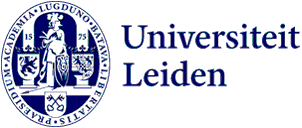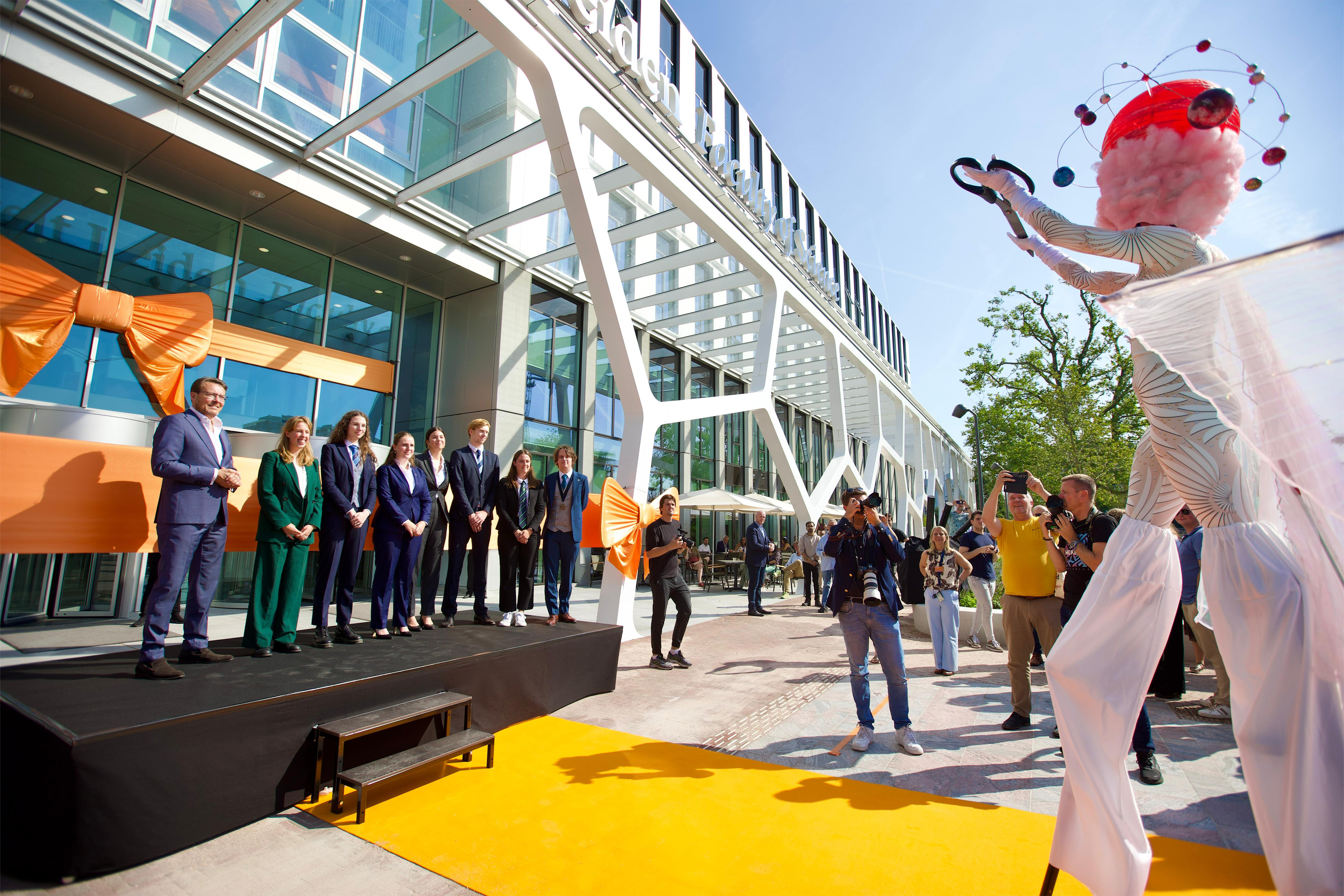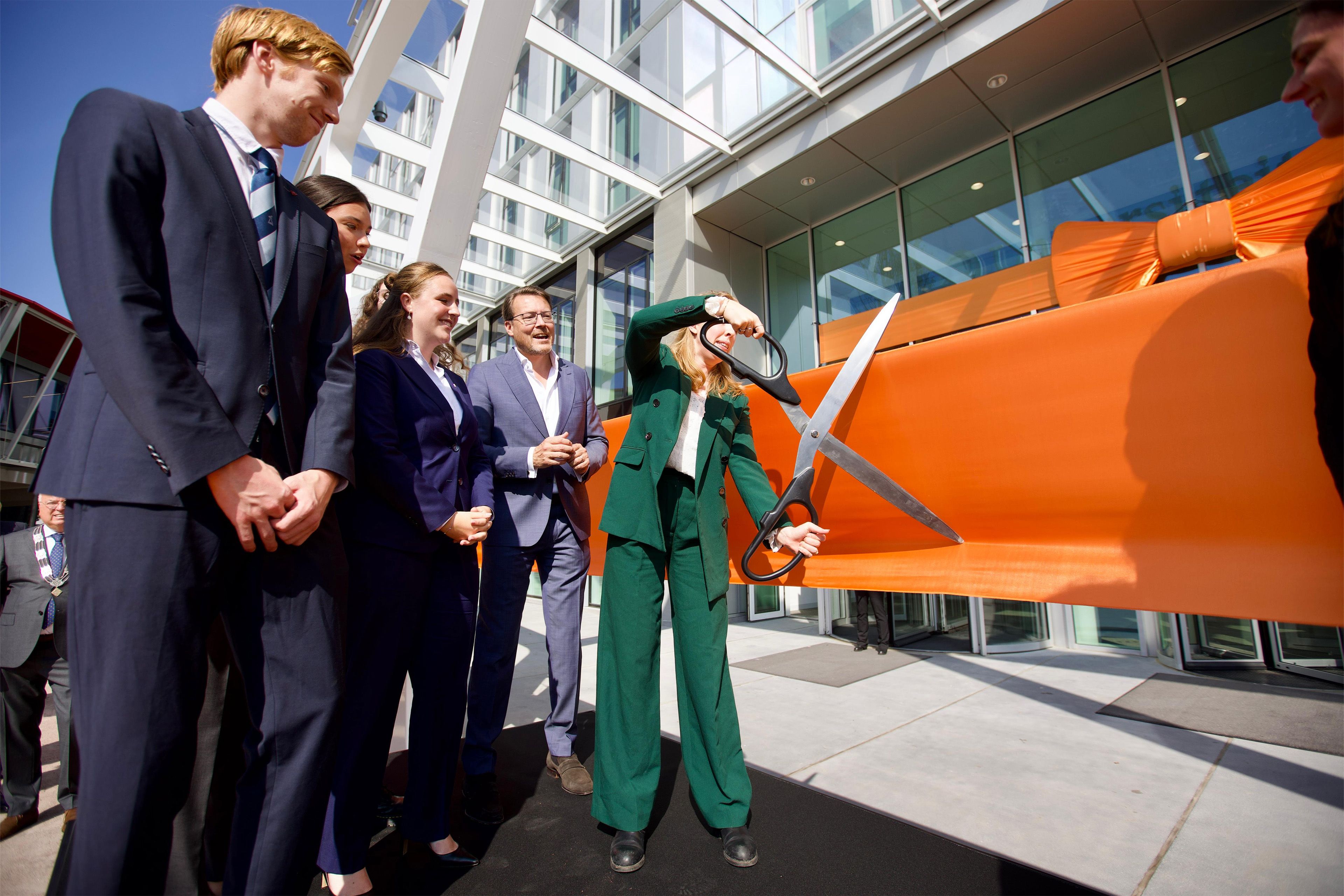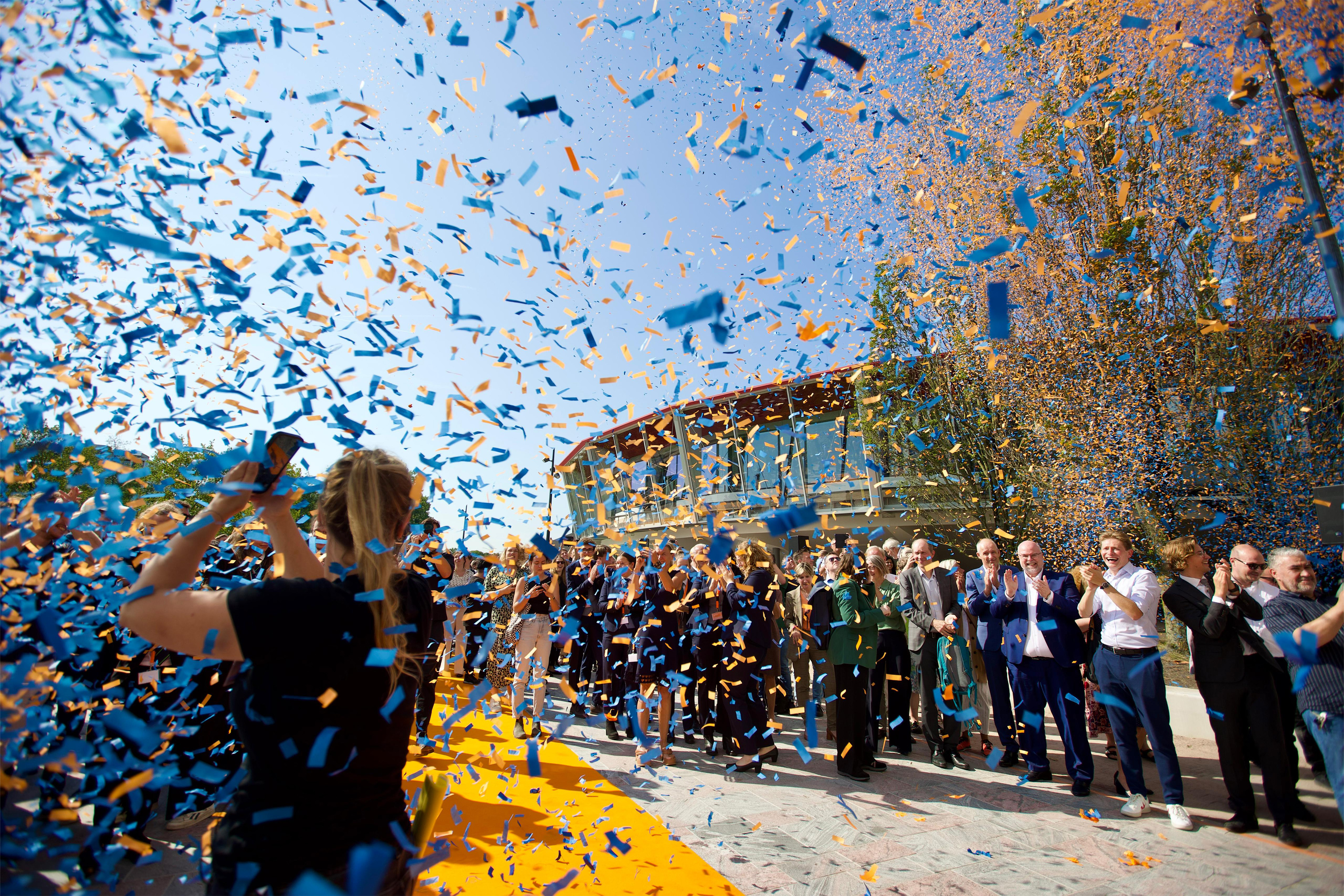
Opening Gorlaeus Building celebrated grandly
Confetti, stilt walkers and the new Einstein Fountain. On Monday, 2 September, the Gorlaeus Building of the Faculty of Science was festively opened. Together with Constantijn van Oranje, our students cut the ribbon. Dean Jasper Knoester: ‘The building is ready, now it is up to our students and researchers to provide the building blocks for tomorrow’s knowledge and innovations.’
The public gathers outside on the beautiful new campus square. First stop: the Einstein Fountain, designed by Leiden physicist Vincent Icke. Dean Jasper Knoester and President of the Executive Board Annetje Ottow have the honour of initiating the opening ceremony. With the push of a button, together they set the fountain in motion. 74 individual water come to life, mimicking the movement of light in a rotating black hole.
The Dean then hands a large pair of scissors to the striking stilt walkers towering above the crowd. They make their way to the main entrance, where Constantijn van Oranje stands ready accompanied by the chairs of the student associations. The audience counts down. With a snip of the scissors, the ribbon falls to the ground and (environmentally friendly) confetti rains down on the campus square. Hurray: the Gorlaeus is officially opened. The Faculty of Science is ready for the future.
Looking back: from plan to completion
In a talk show preceding the festivities, various key figures discussed the realisation of the building and the future of the faculty. In the first part, the architects of INBO and Sweco Architects and project director Ramon Janssen of Heijmans looked back on the design phase and thirteen years of construction. There was also a spotlight on the sustainability of the building.
A home for students
Students were closely involved from the very beginning of construction. New assessor Berber Verhalle, who represents the students in the Faculty Board, emphasised the added value of the brand-new building for students. ‘This building makes it easier than ever for students to meet and feel at home. Look, for example, at the beautiful lecture halls, our cosy bar, various study areas and even living rooms where students and staff can meet.’

Building blocks for innovation
‘Just as important as the building itself is the impact we aim to achieve with it,’ says Dean Jasper Knoester. ‘It provides space and facilities essential for our students and researchers to make ground-breaking discoveries and develop solutions to tomorrow’s challenges.’ How important that is, emphasises Constantijn van Oranje, present as Special Envoy for Techleap, an organisation dedicated to startups. ‘Major transitions, such as the climate transition, all have a very strong scientific input, but it’s been a challenge to turn that into commercial applications.’ To young researchers, Constantijn advises to keep being curious and grab opportunities.

Collaboration and contact: also outside the building
The Gorlaeus Building is located at the Leiden Bio Science Park (LBSP) and has a central role in the city. Director of the LBSP Esther Peters, stresses the importance of the cooperation with the Faculty of Science. She is proud of the collaborations between science and businesses in the area. ‘Here in the Leiden Bio Science Park, everything comes together: education, research and business. And that’s where innovation starts.’

Starting point for growth and innovation
The state-of-the-art research facilities in the building make the faculty a unique player, not only in the Leiden Bio Science Park, but also nationally and internationally: the National Centre for Cryo-Electron Microscopy NeCEN, the state-of-the-art measurement hall, the Cell Observatory and the Exposome-Scan, where scientists conduct research into, for example, medicines, quantum materials and the impact of environmental factors on our health. Along with top researchers at the faculty, this makes the new Gorlaeus Building a starting point for growth and innovation.
Dean Jasper Knoester is especially proud of this building. ‘As a faculty, we work at the boundaries of knowledge, and we want to pass that on to our students. This building has the facilities to make that possible. With this building, we are ready for the future.’





